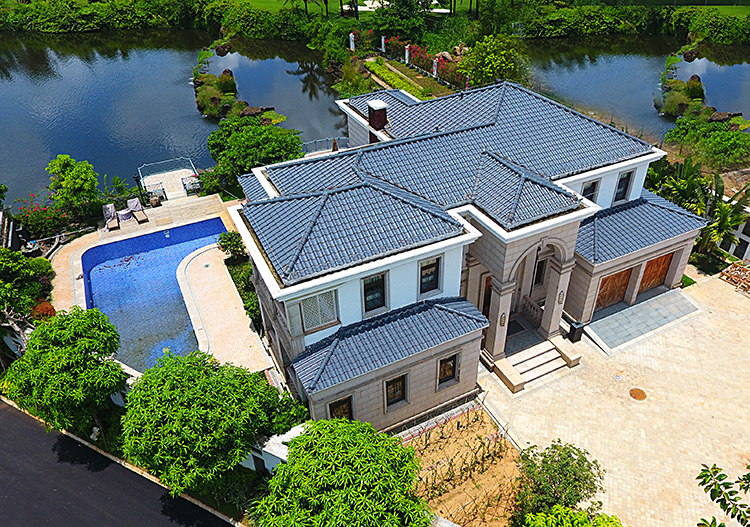Do houses with clay roof tiles require installation of drainage ditches?
Buildings with clay roof tiles usually require the installation of drainage ditches, especially in areas with high rainfall or humid climates. The following are several reasons why installing drainage ditches on clay roof tiles is important:
Rainwater drainage: Clay tiles usually do not absorb water, and rainwater quickly flows into the gaps between the tiles. If there is no drainage ditch, rainwater may accumulate on the roof, increasing the load on the roof, causing tiles to fall off and damaging the roof structure.
Waterproof protection: Drainage ditches help guide rainwater to predetermined locations and prevent water from seeping into structures below the roof. This helps to prevent roof wood decay, moisture inside the roof, and damage to walls and ceilings.
Roof lifespan: An effective drainage system helps extend the lifespan of clay roof tiles. If there is continuous water accumulation or damage on the roof, the clay tiles may be eroded and corroded, requiring more frequent maintenance and earlier replacement.

Preventing the growth of mold and algae: Water accumulation and humidity help promote the growth of mold and algae, which not only affects the appearance of the roof, but may also cause the surface of clay ridge tiles to become smooth and dangerous.
Comfort of living environment: The drainage system ensures that rainwater does not drip into the room, providing a more comfortable and dry living environment, avoiding indoor humidity and water leakage issues.
Although installing drainage ditches on houses with clay roof tiles is a common practice, specific requirements may be influenced by geographical location, climatic conditions, and local building regulations. Therefore, when deciding whether to install drainage ditches, it is recommended to consult a professional roof architect or engineer in order to make the most suitable decision based on your specific situation. In some cases, if the roof slope of the house is large enough, other drainage systems such as eaves or roof overhangs can be considered.
